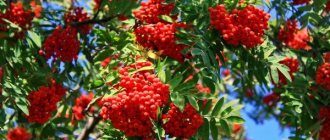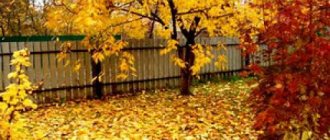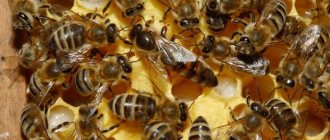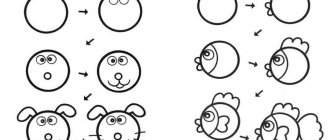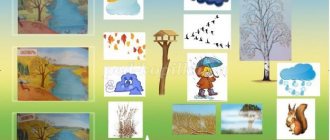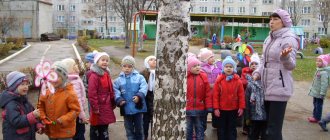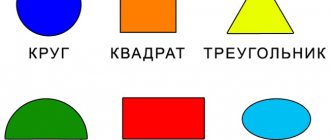Autumn is a wonderful time. At this time of year, the sun shines moderately, air humidity is at an optimal level, and it is not as stuffy as in summer. The days become short and the nights become long and cool. From mid-September to early October you can experience a unique phenomenon: Indian summer. Students can write a report on the world around them for grade 2, “Observations in the fall.”
Activities at this time of year
Summer residents collect apples, grapes, tomatoes, corn, pumpkins, potatoes, and carrots. Products are put into storage. When Indian summer arrives, gardeners prune trees and shrubs and also treat them against harmful insects. The soil is dug up and organic matter is added. In September-October, winter crops are planted and perennial plants are insulated.
Upon completion of agricultural work, a harvest festival is held. The gifts of autumn are laid out on the counters: fruits, vegetables, berries. Changes in nature that occur in autumn fill a person with positive emotions. Rain followed by sunshine is inspiring. Autumn is filled with romance. Marriages are often celebrated at this time of year.
What happens to plants
The weather is changeable, but you can observe a colorful natural phenomenon - leaf fall. In autumn, plants shed their leaves. This process is useful for them, since the foliage helps the vegetation get rid of harmful insects. But a certain number of larvae still remain under the bark.
Shrubs and grasses shed their leaves. This is due to the fact that in autumn the amount of harmful substances in it increases. By shedding leaves, plants get rid of them. Useful components are stored in the roots and tubers of the bulbs. Valuable substances become necessary in the warm season.
In autumn, plants prepare for winter. After a period of dormancy, they tolerate the growing season better. Grasses, trees and shrubs do not stop developing, but their metabolism slows down. In late autumn, the makings of vegetative buds appear, which bloom in the spring.
Plants require moisture and sunlight for photosynthesis. When there is a shortage, biological changes occur at the cellular level: vital processes stop or slow down.
In autumn there are temperature fluctuations. Due to the reduction in daylight hours, the movement of fluid in plants slows down. The sun does not fully warm the earth, the soil dries out. The life cycles of trees and shrubs are completed. In winter, plants have a dormant period, which is associated with a lack of moisture and nutrients.
One of the main signs of autumn is the change in leaf color. They turn yellow, golden, red-orange, and soon fall off. Students are encouraged to make a list of trees that shed their leaves first, these are:
- birch;
- maple;
- Linden;
- oak;
- ash;
- poplar;
- aspen.
Plants lose leaves because they are deficient in chlorophyll, a green pigment that is involved in photosynthesis. The foliage decomposes on the soil surface, saturating it with organic matter. The resulting layer is able to retain rainwater, it saturates the soil with moisture. In such a substrate, crops grow and develop better, and in cold weather their roots are protected from freezing.
Autumn is a time of beautiful landscapes. You can see how all nature is preparing for winter. In a scientific diary for grade 2 on the surrounding world, it is necessary to indicate that in the fall both solid and liquid precipitation are observed. The climate changes sharply, at the end of November fogs appear and frost forms on the plants.
At this time, the winds blow, the clouds fill with rain. Many people associate autumn with mud, slush, and chilly winds. At the end of November, snow dew appears early in the morning.
What are the autumn changes in inanimate nature?
No less important changes occur in inanimate nature. Already in September–October you can observe:
- decrease in air temperature;
- reducing daylight hours;
- characteristic natural phenomena - rain, fog, frost, frost, first snow and freezing.
Shorter daylight hours, lower air temperature
As you know from physics courses, our planet revolves around the Sun and makes a full circle in a year. During rotation, the Northern Hemisphere of the Earth is tilted towards the Sun for several months (summer). Over the next few months it deviates from it (winter). At this time, there is a decrease in the day and an increase in the night.
In autumn, the sun does not rise above the horizon as high as in summer. The days are getting shorter and there is less sunlight. In mid-September to early October, a short period of warming begins, which is popularly called Indian summer. It usually ends in mid-October.
The cooling that comes as a result of a decrease in sunlight and heat affects all living nature, since the decrease in sunlight is directly related to the cooling. According to Tom Jackson, author of Hacking Planet Earth, the Earth's atmosphere is in constant motion. This affects the diversity of meteorological conditions in different geographical locations. This continuously changing state is called weather.
Weather phenomena in autumn
The following natural phenomena are most characteristic of autumn:
- Unexpected frosts. They occur when two factors combine: damp soil and a sudden change in weather. In the book “Secret Signs of Nature. How to become a weather detective and read signs” Peter Wohlleben warns: unexpected frosts pose a real threat to plants and all living things.
- Fog. This is a thick cloud consisting of microparticles of moisture. It is formed as a result of a temperature difference near the soil surface.
Fog in Autumn: Pexels
- Frost. It consists of small particles of dew frozen in the form of snowflakes. Frost covers all surfaces with a thin, prickly layer. Its appearance indicates sub-zero temperature.
- Wind and rain. In autumn, an atmospheric front brings cold air masses. The wind changes direction, intensifies, causing precipitation and bad weather.
- Ice drift. When the air temperature drops to negative values in autumn, the surface of reservoirs with weak or no current becomes covered with crusts of ice. Immature ice under the influence of wind forms the so-called autumn ice drift.
- Ice. When it's frosty outside, rainfall on the surface of roads and fields turns into an ice crust. This phenomenon is often observed in mid and late autumn.
Autumn is an incredible time when the surrounding nature changes dramatically. Continuous changes occur in living and inanimate nature. The transition from the warm days of late summer to the first snow and frosts of winter occurs gradually during the fall.
Original article: https://www.nur.kz/family/school/1816103-cto-takoe-osen-vaznye-sezonnye-izmenenia-v-organizme-celoveka/
Changes in the animal world
Natural phenomena that occur in autumn force the animal world to adapt to other conditions. Birds migrate to warm countries, but some, such as pigeons, remain in cities and villages. They do well in winter in such conditions. The first to fly away are:
- swallows;
- starlings;
- nightingales;
- rooks.
Before making the flight, they gather in flocks. Birds sense climate change. As soon as it starts to get cold, they hit the road. The flight differs in duration and speed: the average duration is 2 months, speed is 30 km per day.
Birds migrate at different times of the day: morning, afternoon, night. While moving, the bird stops to get food. Birds need to accumulate a subcutaneous layer. Thanks to him, it will be possible to withstand temperature changes. The following people also lead a nomadic lifestyle:
- woodpeckers;
- bullfinches;
- owls;
- jays.
They live in forests and feed on fruit remains. List of birds that tolerate cold well:
- tits;
- sparrows;
- magpies;
- pigeons
In the cold season they get their own food. Insects - beetles, mosquitoes, flies, butterflies, grasshoppers, dragonflies, ants - hide from the cold under tree bark or live near the roots. They create homes in tree cracks and also hide in moss.
With the onset of late autumn, cold-blooded animals change their body temperature. They differ from warm-blooded species in their undeveloped thermoregulation system. Cold-blooded ones include:
- amphibians;
- reptiles;
- frogs;
- lizards;
- snakes.
In mid-November, the frog, the smallest representative of amphibians, hides in secluded places. Many animals hibernate. When they see that the cold weather is approaching, they begin to feed heavily. Predators eat a lot of food and gain weight. Some stock up on food, put mushrooms, seeds, fruits, and insect larvae in shelters.
In autumn, mammals molt; some species, in particular deer, lynx, and wolves, change the shade of their fur. In summer it gets darker, and in winter it gets lighter. The undercoat intensifies in the cold season, it becomes denser and lengthens. Thanks to this, the animal warms up well in winter.
In autumn, living organisms are transformed and modified. Hedgehogs, rodents, chipmunks, and brown bears hibernate. They must accumulate fat. Elk, wild boar and lynx begin their mating season in the fall. Animals breed.
Badgers, brown bears, chipmunks, and hedgehogs feed heavily and then hibernate. The fat layer helps keep you warm during cold periods. Moose, wild boars, bears and lynxes are entering their mating season. They breed in the spring.
What changes occur in wildlife in autumn?
Autumn is the period of transition from summer activity to the processes of winter stagnation. Autumn is characterized by the following changes in wildlife:
- yellowing and falling leaves;
- wilting of herbaceous plants;
- preparing animals for winter (collecting and storing supplies, growing fur);
- departure of migratory birds;
- disappearance of insects.
Let's look at these natural phenomena in more detail.
Yellowing and falling leaves
The first sign of autumn is the change in color of the leaves on the trees. This natural phenomenon is associated with biological changes that occur in most trees during the onset of the first cold weather.
Why do leaves on trees change color? As Georgy Graubin explains in his book “Why Leaves Fall in Autumn?”, the green color is given to them by a special substance - chlorophyll. With the onset of autumn, the sun shines less, the days become shorter, and plants receive less light.
Under such conditions, chlorophyll is destroyed and does not have time to be restored. The green color in the foliage decreases and yellow becomes noticeable. In autumn, the leaves can be yellow, red, or crimson. It depends on what coloring matter is in the leaf.
After the color changes in the last months of autumn, the leaves begin to fall from the trees. This has great physiological significance for them:
- plants get the opportunity to rest and prepare for hibernation;
- the risk of mechanical damage is reduced - without leaves, a lot of snow does not accumulate on the branches during snowfalls;
- Together with the leaves, the plants shed pests that lived on them in the summer.
Fallen Yellow Leaves: Pexels
Wilting grass
In autumn, herbs part with the above-ground part of the plant in order to save the more important parts - rhizome, tuber or bulb.
Over the summer, nutrients accumulate in the underground structural elements of grasses, which perform two important functions:
- do not allow the plant to die during the cold period;
- retain the ability to quickly revive the stem and leaves with the arrival of spring.
Some animals hibernate
Hibernation is a special state of plants and animals, when during periods of cold weather and lack of food, the activity and vital functions of the body decrease, the exchange of juices and the need for food decreases.
Who hibernates when autumn arrives? Here are several types:
- Some mammals (bear, hedgehog, badger, marmot), rodents (hamster, gopher). They hibernate at the end of autumn - at the beginning of winter, which is due to the lack of food supply for them.
- Cold-blooded animals (snakes, frogs), reptiles and amphibians. They "fall asleep" in late autumn because they cannot maintain the temperature necessary to survive.
- Insects - flies, mosquitoes, beetles, spiders. With the onset of cold weather, they hide in cozy crevices and appear dead. This is a protective reaction to a decrease in temperature. With the onset of spring they will come to life.
Animals stock up
Animals that do not hibernate for the winter are actively preparing for the cold. For this they:
- prepare food supplies;
- insulate homes;
- change color and grow thick and warm fur.
Squirrel Stocking Up for the Winter: Pexels
Bird migration
Migratory bird species prepare to fly to warmer climes from the beginning of autumn. Then their flight begins. As a rule, birds fly in flocks to the same wintering areas, and with the onset of spring they return to their native lands.
As Leonid Sokolov states in the book “Why Migratory Birds Return Home,” loyalty to their homeland was found in birds belonging to different groups, ranging from the largest and longest-lived flying birds (albatrosses, petrels, storks, swans) and ending with the smallest and short-lived passerines ( blackbirds, wrens, flycatchers, warblers, etc.).
Wintering birds do not fly anywhere and feed intensively in the autumn forests.
